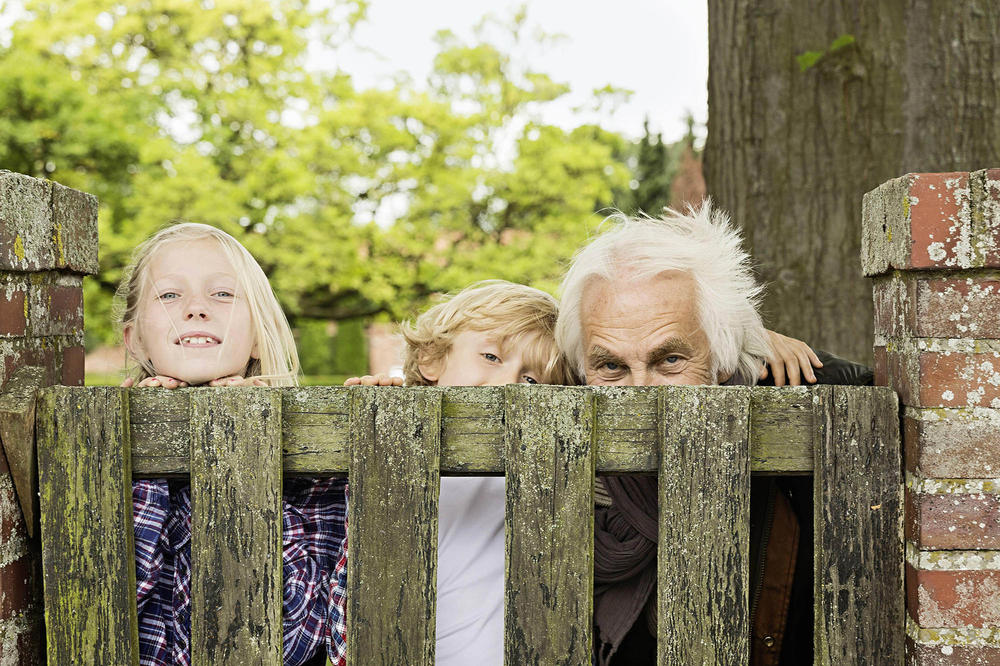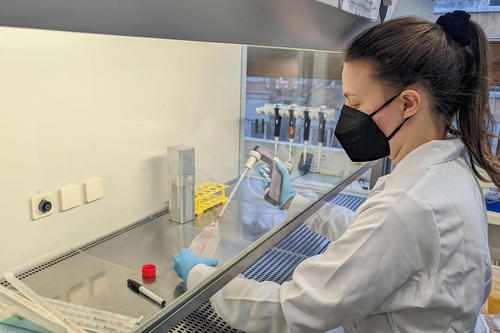A Small Difference
Children are less likely to become seriously ill with Covid-19 due to higher body temperature
Mar 28, 2022
The risk of a severe illness after infection with the coronavirus increases steadily after the age of 50 to 60 years. According to calculations by the Robert Koch Institute, around 2.8 million people in Germany over the age of 60 are not vaccinated.
Image Credit: Picture Alliance/Image Source/Nils Hendrik Muller
Do you remember the time before anybody knew anything about coronaviruses, about their nubs and spike proteins, when Grandma used to say, “Dress warmly, otherwise you’ll catch a cold!” It turns out that this advice was not just an expression of affection and concern; it can also be justified scientifically.
At Freie Universität Berlin biochemist Professor Florian Heyd and his research team were able to show that a warm body fights off cold viruses better than a cool one. According to Heyd, the connection between body temperature and virus defense also helps to explain why children who contract Covid-19 usually have a milder course than adults at an advanced age. Children are warmer and because older people are less warm, they are more susceptible to severe coronavirus disease.
One Degree Celsius Difference in Body Temperature Is Enough to Turn on Antiviral Genes
Biochemist Florian Heyd says that body temperature plays a much stronger role in immune defense and our overall health than we previously thought.
Image Credit: Bobby Draegert
“It has been statistically proven that children are more easily able to cope with an infection with Covid-19. Using a mechanism of temperature-dependent protein formation in the body, we can now contribute a possible molecular mechanism of why this is the case,” explains Professor Heyd. “The class of proteins in the body responsible for fighting off the SarsCov2 virus responds very precisely to heat. Just one degree Celsius difference in body temperature is enough to switch on the antiviral genes. The precision with which this works is remarkable.”
It is well known that human body temperature is not always the same. It can warm up by two, three, or even four degrees Celsius: more than 38 degrees Celsius means fever. It is also common knowledge that fever activates the immune system. This works, for example, through the “heat shock response,” which is switched on at a temperature of around 38 degrees Celsius. This helps the body make proteins called interferons, which the immune system needs to fight infection. This is all well known.
The Warmer the Body, the Higher the Number of Defense Proteins
Something new is shown in research conducted by Florian Heyd and doctoral student Bruna Los: the body’s own immune system rises even with relatively small differences in temperature, between 36.5 degrees Celsius and 37.5 degrees Celsius, i.e., within the normal temperature of a healthy person. Heyd explains that body temperature differs from person to person and depends on the daily rhythm. It is lower when we are asleep than when we are awake, and it is higher during physical activity and sports than when we are at rest. Above all, however, it also depends on age: a child has an average body temperature of more than 37 degrees Celsius, in older people it is below 36.5 degrees Celsius.
Based on experiments with cell cultures, Heyd’s team was able to prove that this one degree difference is sufficient to “switch on” the antiviral genes in the body and thus the defense, or more precisely, the STAT2 protein, signal transducer and activator of transcription. This protein is crucial for the production of interferons, which are needed to fight off viruses. Put simply: the warmer the body, the higher the number of defense proteins.
Animals, Plants, and Unicellular Algae Also Have Temperature Sensors
Heyd points out that that does not only apply to humans. Interestingly, the mechanism that allows the body to measure small changes in temperature is highly conserved evolutionarily. The temperature sensors are found in plants, animal, and even unicellular algae. They are each adapted to the temperature range of the various organisms.
Biochemist Heyd was able to demonstrate the biological relevance together with a colleague from veterinary medicine at Freie Universität Berlin. Dr. Jakob Trimpert measured the body temperature of hamsters infected with the coronavirus. Trimpert’s data show similar results as Heyd’s cell culture experiments. Even at a slightly higher body temperature, the virus multiplied more poorly in the hamsters. Even though only a few animals have been studied so far, Heyd thinks the approach is worth pursuing.
While working with cell cultures, doctoral student Bruna Los found evidence of the body temperature at which the body’s defense against viruses kicks in.
Image Credit: Bobby Draegert
Positive Side Effects of Exercise and Sports
Biochemist Heyd is convinced that overall body temperature plays a much greater role in our health than we previously thought. For example, data from Finland show that two sauna sessions per week reduce the risk of developing Alzheimer’s. Heyd suspects a connection with the effect of heat on the protein tau, which is relevant for neurodegeneration.
Scientists also know that regular exercise can help with depression and prevent Alzheimer’s. There are many reasons for the healthy effects of sports: the heart beats faster and stronger, and the increased blood flow to arteries and organs is important for the entire organism.
Heyd’s focus is not on blood flow, blood pressure, or heart strength, but on body temperature. And it increases with physical activity. But does it play such a big role? “If I go running for two hours, my temperature rises to 38.5 Celsius degrees,” says Heyd. And after just 15 minutes of cycling, the body heats up by 0.5 Celsius degrees. “That could make an important contribution, just like sports have a health-promoting effect.”
Old Folk Wisdom Substantiated by Science
Body heat also plays a role in cancer treatment. Some tumor types respond well to heat therapy, hyperthermia, in combination with chemotherapy. The molecular mechanism behind this has not yet been explored.
Heyd’s team has now summarized their research on the effect of body temperature on the coronavirus immune response in an article for publication, which is currently in the peer-review process: This means that other scientists are reviewing the findings of the study.
Should Heyd’s research findings be substantiated, it would at the same time provide the scientific basis for popular wisdom. Except that a warning from the grandmother to the granddaughter could be more precise: “Dress warmly, that’s important for your STAT2 proteins!” And if the granddaughter does catch a cold, warm socks, tea and a hot-water bottle will help – all scientifically proven.
This text originally appeared in German on February 26, 2022, in the Tagesspiegel newspaper supplement published by Freie Universität Berlin.
Further Information
- Homepage of Prof. Dr. Florian Heyd’s group at the Institute of Chemistry and Biochemistry, Freie Universität Berlin
-
More about the Coronavirus (in German): Das Coronavirus-Update von NDR Info mit Prof. Christian Drosten und Prof. Dr. Sandra Ciesek



